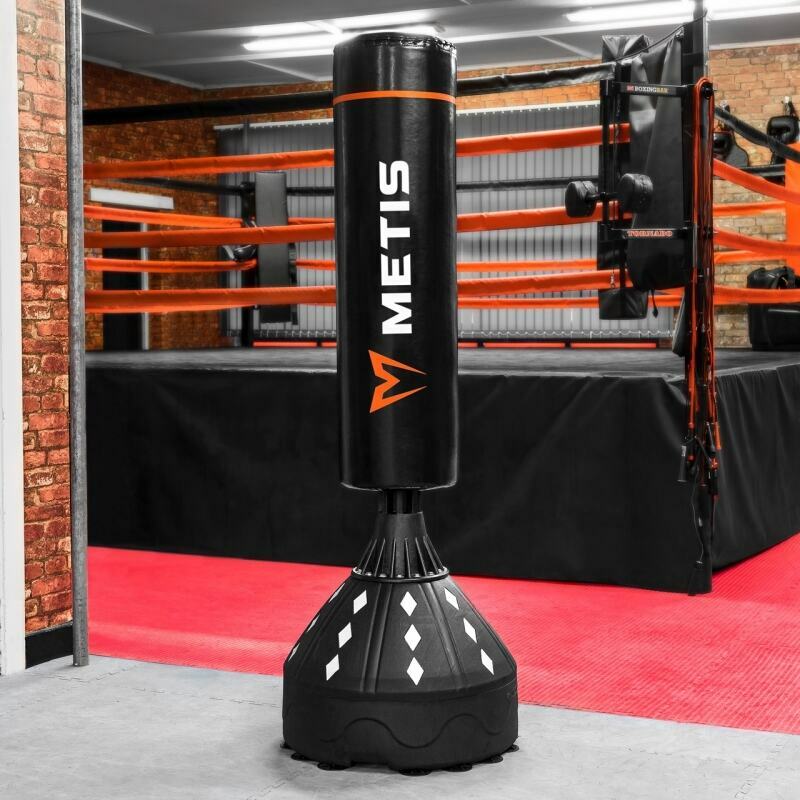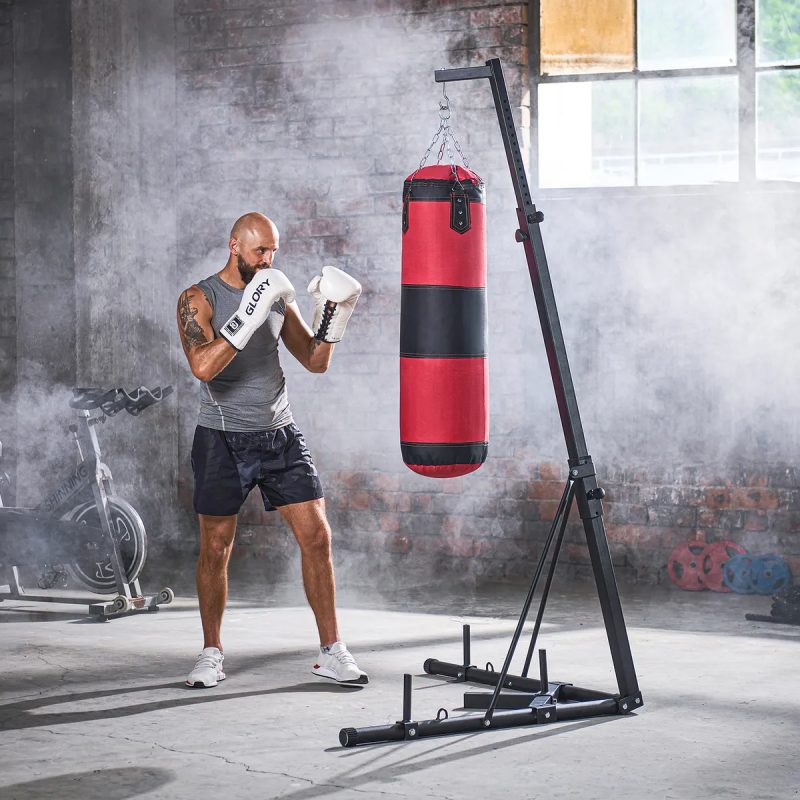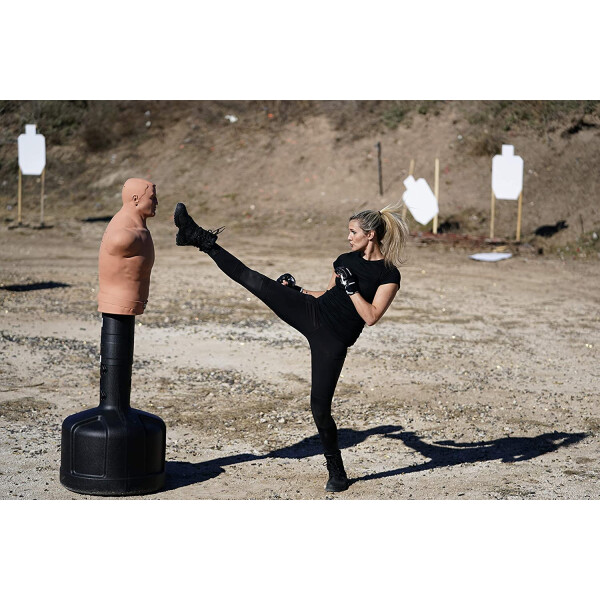Punching bags are a staple in many gyms and home fitness centers. They provide a great way to improve your punching technique, strength, and cardiovascular endurance. But with so many types of punching bags available, it can be tough to decide which one is right for you.
This article will explore the most common types of punching bags and their uses.
The Classic: Heavy Bag
The heavy bag is the workhorse of boxing gyms. It’s a large, cylindrical bag that is typically suspended from the ceiling or a stand. Heavy bags are ideal for developing punching power, core strength, and overall conditioning.
They come in a variety of weights and sizes. A heavier bag will provide more resistance for stronger punchers, while a lighter bag can be easier to maneuver for beginners.
Focus on Technique with the Speed Bag
Speed bags are small, tethered bags that are mounted on a swiveling platform. They are designed to improve hand-eye coordination, reflexes, and punching speed. Speed bags require quick, controlled punches and can be a great workout for the upper body.

Double-Ended Bag for Footwork and Defense
The double-ended bag is a unique type of punching bag that has a bag on each end of a rope. It is suspended from above and swings freely when struck. Double-ended bags are great for developing footwork, agility, and defensive skills. They can also be used to practice combinations of punches and kicks.
Aqua Bags: A Low-Impact Option
Aqua bags are filled with water, which makes them softer and more forgiving on your joints than traditional punching bags. They are a good option for people who are new to punching bags or who have injuries. Aqua bags can also be used for a low-impact workout that is easy on the joints.
Banana Bags for Upper Body Conditioning
Banana bags are long, cylindrical bags that are shaped like a banana. They are designed for upper body conditioning and can be used for a variety of punches and elbows strikes. Banana bags are also popular for practicing Muay Thai clinch techniques.

Choosing the Right Punching Bag
The best punching bag for you will depend on your fitness goals and experience level. Here are some things to consider when making your decision:
- What are your fitness goals? Are you looking to improve your punching power, speed, or endurance?
- What is your experience level? If you are a beginner, you may want to start with a lighter bag.
- How much space do you have? Heavy bags require a lot of space, while speed bags and aqua bags are more compact.
- What is your budget? Punching bags range in price from around $50 to $200 or more.
Punching bags are a versatile piece of equipment that can be used for a variety of workouts. By choosing the right type of punching bag for your needs, you can improve your fitness and have fun at the same time.
Punching Bag Variations: Expanding Your Workouts
Beyond the core types, punching bags come in variations that can add specific elements to your workout:
-
Wall Bags: These mounted bags are great for practicing uppercuts, hooks, and close-range strikes. They come in angled and curved designs to mimic an opponent’s body position.
-
Teardrop Bags: Shaped like a teardrop, these bags are popular for simulating kicking and knee strikes used in martial arts like Muay Thai. They provide a larger hitting surface for leg and knee strikes compared to standard heavy bags.
-
Uppercut Bags: Designed specifically for uppercut practice, these smaller bags are often mounted on a stand or wall at chest height. They allow you to focus on the uppercut motion and develop power and technique.

Safety Precautions When Using Punching Bags
Types of punching bags is a great workout tool, but it’s important to prioritize safety. Here are some key reminders:
-
Proper Hand Wraps and Gloves: Always wear hand wraps and gloves that fit properly to protect your hands and wrists from injury.
-
Supportive Shoes: Wear supportive shoes that provide good traction to prevent slips and falls during intense workouts.
-
Start Light and Gradually Increase Intensity: Begin with lighter weights and shorter durations, gradually increasing intensity as your fitness level improves.
-
Focus on Technique: Maintain proper form throughout your workout to avoid straining muscles or joints.
-
Listen to Your Body: Take breaks when you need them and stop if you experience any pain.
Punching bags are a valuable tool for fitness enthusiasts and martial artists alike. With so many varieties available, there’s a punching bag perfect for your needs and goals. Remember to prioritize safety, listen to your body, and focus on proper technique to get the most out of your punching bag workouts.

Punching Bag Accessories: Enhancing Your Workouts
Punching bags can be even more versatile with the right accessories:
-
Punching Bag Stands: Freestanding stands allow you to set up your punching bag anywhere without permanent mounting. Look for stands that are adjustable for height and sturdy enough to handle the weight of the bag.
-
Swivel for Speed Bags: A swivel is a crucial component for speed bags, allowing them to move freely for dynamic training.
-
Heavy Bag Platform: A platform provides a stable base for your heavy bag and can elevate it to a comfortable punching height.
-
Punching Bag Mitts: These mitts are worn by a partner who holds them while you practice punching combinations. Mitts help develop accuracy and punching power.

Conditioning Beyond the Bag: Building a Well-Rounded Routine
While punching bags are a fantastic tool, they are one part of a well-rounded fitness routine. Here are some additional elements to consider:
-
Stretching: Regular stretching improves flexibility and range of motion, which can enhance your punching technique and reduce injury risk.
-
Core Strength Training: A strong core is essential for stability and power in all punching motions. Exercises like planks, crunches, and Russian twists can strengthen your core.
-
Cardio: Don’t neglect cardiovascular exercise! Running, swimming, or jumping rope can improve your endurance for extended punching bag workouts.
By incorporating these elements alongside your punching bag training, you can develop a comprehensive fitness routine that builds strength, endurance, and overall conditioning.
Heavy Bags for Strength and Power Training
Heavy bags are a staple in boxing and other combat sports, designed to withstand powerful punches and kicks. They come in various sizes and weights, allowing athletes to tailor their training according to their strength and size. These durable bags typically hang from the ceiling and provide significant resistance, making them essential for developing punching power and improving overall striking technique. Working with heavy bags also offers a rigorous cardiovascular workout and can help athletes improve their coordination and body mechanics. Incorporating a heavy bag into a training regimen is crucial for fighters looking to simulate the experience of striking an opponent and for anyone interested in building strength and endurance.
Speed Bags for Rhythm and Reflexes
Speed bags are small, air-filled bags tethered at the top and bottom, allowing them to rebound quickly when struck. They are used to enhance a boxer’s hand-eye coordination, rhythm, and timing. The rapid movement of the speed bag trains fighters to keep their hands up and to sharpen their reflexes, which is vital for defense as well as offense in the ring. This type of boxing bag helps develop speed and precision, encouraging a fast-paced and repetitive striking motion that can improve the agility of the wrists and arms. Regular practice with a speed bag is beneficial for those aiming to refine the quickness and accuracy of their punches, an attribute that is often the difference between winning and losing in the sport of boxing.

types of punching bags
Freestanding Punching Bags for Versatile Placement
Freestanding different punching bags are an excellent option for those who prefer a portable and space-saving solution for their training needs. Unlike their hanging counterparts, these different bags have a heavy base, often filled with sand or water, allowing them to stand upright independently. The added flexibility of placement makes them a favorite for home gyms or training areas where ceiling mounts are not possible. Freestanding bags can vary in size and design, some even mimicking the torso and head of an opponent for more targeted practice. They are well-suited for practicing both punches and kicks, making them a versatile tool for martial artists across disciplines looking to develop their striking skills without the constraints of a fixed heavy bag.
Reflex Bags for Improving Dodge and Strike Skills
Reflex bags, or cobra bags, are design to improve a fighter’s dodging and striking abilities. Mounted on a recoiling spring attached to a base, these bags bounce back quickly after each hit, mimicking the movement of an opponent in the ring. The unpredictable nature of the bag’s movement challenges the user to enhance their reflexes, timing, and accuracy. Regular workouts with a reflex bag help develop a boxer’s defense maneuvers, such as slipping and bobbing, while also providing an engaging and dynamic strike training experience. Boxers utilize reflex bags to fine-tune their fight strategy and adaptability, as the rapid response required can greatly benefit their performance during actual sparring sessions or competitions.
